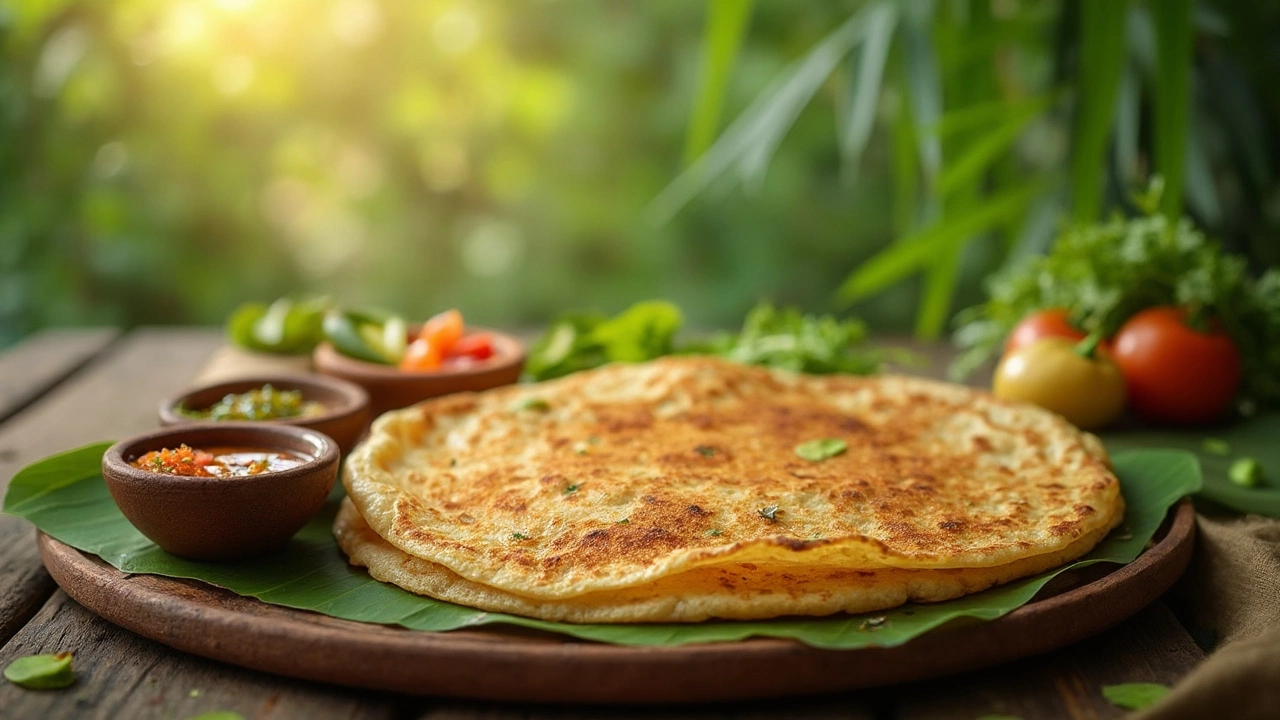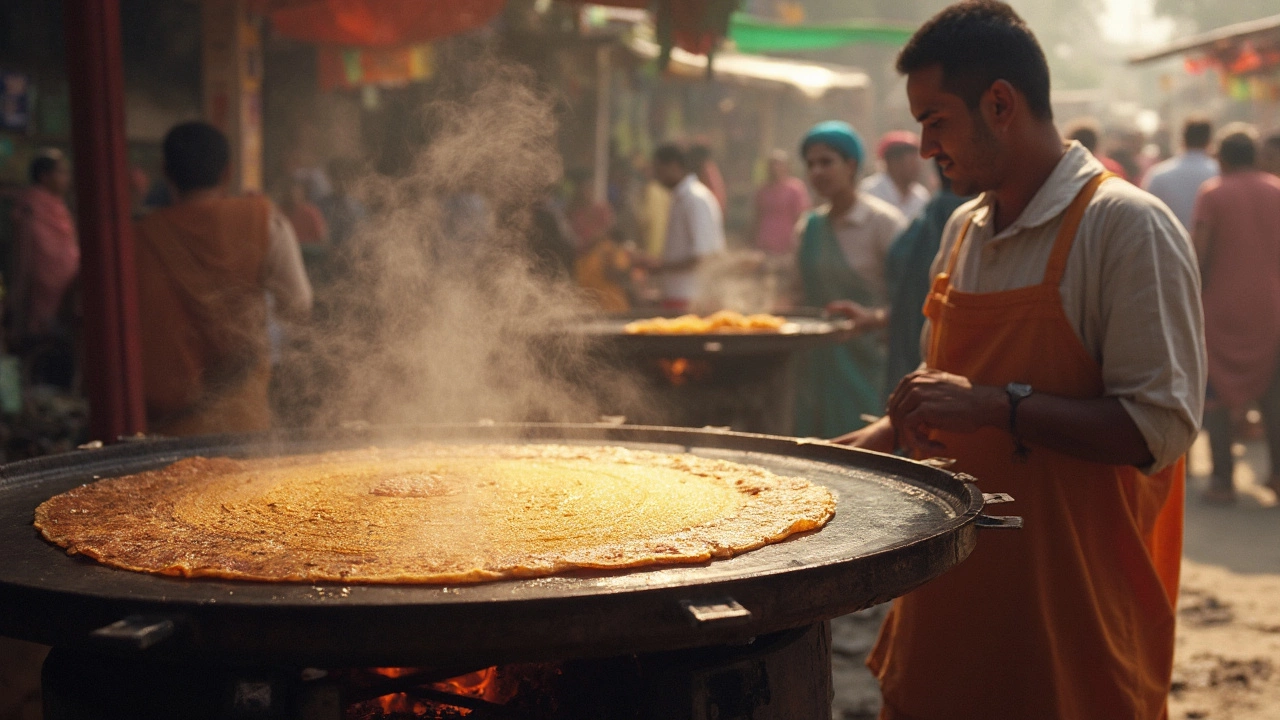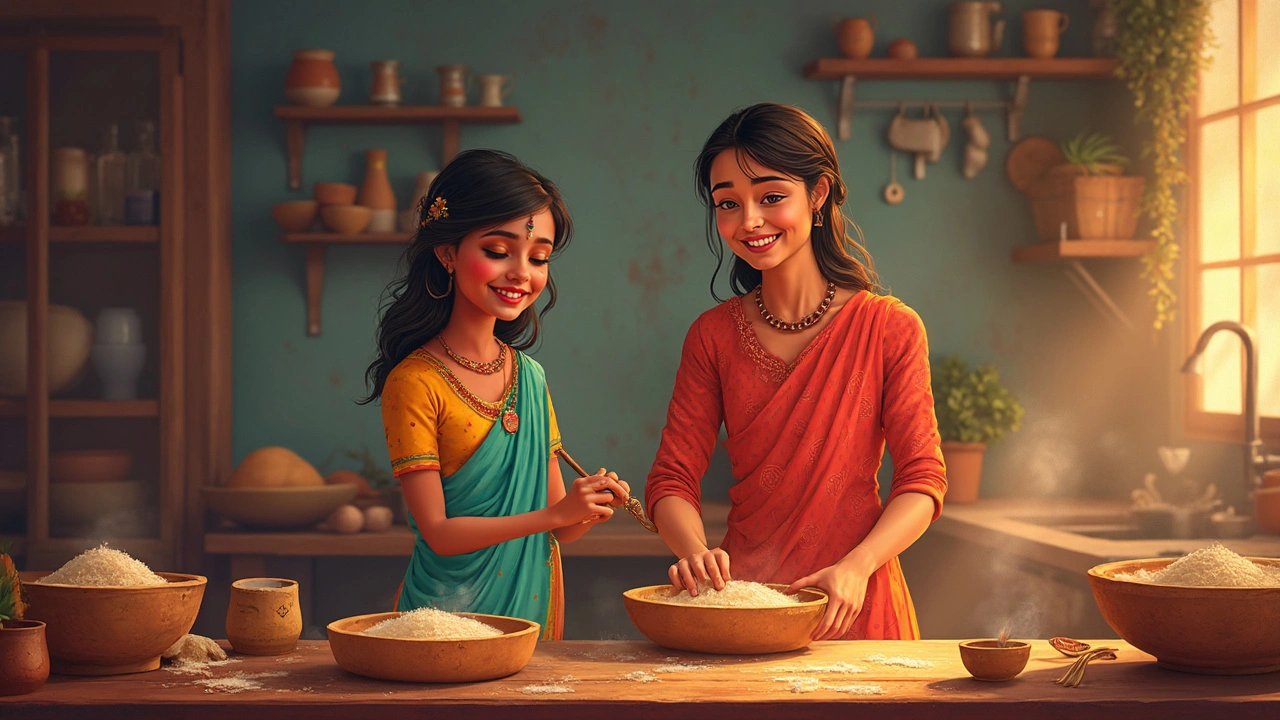Dosa batter is more than just a base for a delicious South Indian breakfast; it's a mix of rice and lentils that packs a nutritional punch. If you've ever wondered whether this popular ingredient is good for you, you're in luck. Let's explore the world of dosa batter and see what makes it a healthy choice.
First things first, dosa batter is typically made from fermented rice and urad dal (black gram), a combination that's rich in carbohydrates and proteins. Fermentation not only enhances its nutritional value by increasing the bioavailability of nutrients but also makes it easier to digest. So, if you're looking to include more plant-based proteins in your diet, dosa batter could be your best friend.
- What's Inside Dosa Batter?
- Nutritional Benefits of Dosa
- Potential Health Concerns
- How to Make It Healthier
- Delicious Dosa Creations
What's Inside Dosa Batter?
Let's break down the main ingredients in dosa batter, the secret to its taste and health benefits.
Rice
The base of dosa batter is rice, usually a mix of regular rice and a slightly starchy variety. Rice provides the essential carbohydrates that give you energy. It's also gluten-free, making it a good option for those with gluten sensitivities.
Urad Dal
Urad dal, also known as black gram, is the second key ingredient. It's packed with protein, which is important for building and repairing body tissues. It's not just about proteins; it also contains iron, calcium, and magnesium, providing a range of benefits from improved blood health to stronger bones.
Water
The next component is simple water, which helps in creating the right consistency for fermentation. No fancy stuff here, just good ol' H2O.
Additional Ingredients
- Fenugreek Seeds: These seeds are often added for better fermenting action and to give the batter a slight tang. Plus, they help in balancing blood sugar levels.
- Salt: Added for taste, salt also plays a role in the fermentation process, giving the batter a slightly different texture.
Fermentation Magic
The real magic happens during fermentation. This process is crucial as it breaks down starches and proteins, making them easier for your body to digest. Fermentation also enriches the batter with B-vitamins and helpful enzymes.
Interestingly, a study from 2022 found that fermented foods like dosa can improve gut health due to the presence of probiotics. This makes it not just tasty but also good for your digestive system.
Each of these ingredients has a specific role in making dosa batter not only delicious but also nutritious, truly a health-friendly choice.
Nutritional Benefits of Dosa
So, what's so special about dosa? For starters, this humble dish is a powerhouse of nutrients. Thanks to its main ingredients, rice and urad dal, it brings a lot of goodness to the table.
Rich Source of Carbs and Proteins
Every dosa you munch on provides a healthy dose of carbohydrates, which are essential for energy, especially if you're someone who juggles work and workouts. The urad dal part of the batter contributes plant-based protein, making it a great option for vegetarians and vegans looking to build muscle or maintain their health.
Boosts Digestion
The fermentation process, which is crucial in making the dosa batter, is a game-changer. It not only breaks down the starches, making dosas easier to digest, but it also helps in producing gut-friendly bacteria. This can lead to better gut health, which we all know is vital for overall wellbeing.
Packed with Minerals and Vitamins
Dosas aren't just about the big players like carbs and proteins. They're loaded with important vitamins and minerals, too. The urad dal contributes iron and calcium, which help in boosting red blood cells and improving bone health.
And if you're environmentally conscious, you'll be happy to hear that compared to other protein sources, growing and harvesting rice and lentils have a smaller carbon footprint.
Low Calorie and Gluten-Free
For those watching their calorie intake, dosas can be a great choice as they're low in calories, provided you're careful with the oil during cooking. Plus, they're naturally gluten-free, which is perfect for anyone with a gluten intolerance.
So, when you're enjoying your next dosa, remember that it's not just a treat for your taste buds but your health, too.

Potential Health Concerns
While dosa batter is generally healthy, there are a few things you might want to watch out for. Let's break it down, keeping it simple and practical for everyday life.
Fermentation Matters
First off, the fermentation process is crucial for dosa batter. If not done properly, it can result in inadequate breakdown of anti-nutrients, which might hinder nutrient absorption in the body. So, make sure your batter is given the right time to ferment, usually about 8 to 12 hours, depending on the climate.
Carb Content
Dosa is predominantly made of rice, meaning it's high in carbs. This isn't a bad thing by itself, but if you’re watching your carb intake or managing blood sugar levels, keep portions in check. You can reduce the glycemic load by using more lentils and less rice.
Sodium Levels
Another concern is sodium. Considering the salt added during preparation and any salty accompaniments served with dosas, there’s room for sodium levels to creep up. Watch the salt when mixing your dosa batter and try pairing your dosas with fresh, low-sodium chutneys instead.
Nutritional Composition of Typical Dosa
If you're curious about the nutritional breakdown, here's a quick snapshot of a typical dosa (100g serving):
| Component | Amount |
|---|---|
| Calories | 168 |
| Carbohydrates | 28g |
| Protein | 4g |
| Fat | 3g |
| Sodium | 15mg |
Whilst dosa batter is versatile and nutritious, knowing these potential concerns can help you make it a more balanced part of your diet. Give it a try, and tweak recipes to suit your dietary needs.
How to Make It Healthier
Getting the most out of your dosa batter means tweaking it here and there to boost its health benefits. Don't worry, it's easier than you might think! Let's dive into some simple ways to make your dosa even healthier and keep those taste buds happy.
Use Whole Grains
One major tip is to swap out regular white rice for whole grains like brown rice or quinoa. Whole grains are packed with extra fiber and nutrients, which can help with digestion and give you longer-lasting energy. Just make sure to adjust your soaking time because these grains take a bit longer to soften.
Add Some Millets
Incorporating millets like ragi, jowar, or bajra into your dosa batter not only adds a nutty flavor but also boosts its nutritional content. Millets are rich in minerals such as calcium and iron, making your dosa a powerhouse of goodness.
Go for Lentil Variety
While urad dal is the go-to, mixing in other lentils like moong dal or masoor dal can diversify the protein profile. Plus, these dals ferment well and add a unique twist to your dosas.
Keep It Low on Oil
When cooking, try using non-stick pans so you can cut down on the oil. A little oil helps with the crispiness, but it's easy to go overboard. Just a few drops are all you need.
Enhance with Veggies
Pack an extra punch by adding finely chopped vegetables like carrots, spinach, or onions directly into the batter. This not only enriches the flavor but also increases your vitamin intake without much effort.
Table of Nutritional Comparison
For those interested in the nitty-gritty, here's a quick comparison of nutrients found in traditional and enhanced dosa batter:
| Ingredient | Fiber (g) | Protein (g) | Calories (Cal) |
|---|---|---|---|
| Traditional Batter | 1.5 | 8 | 133 |
| With Whole Grains & Millets | 3.5 | 10 | 140 |
Making a few small changes to your dosa batter can have a big impact on its nutritional value. So, play around with these ideas and find what works best for you!

Delicious Dosa Creations
If you think dosa is just a crispy pancake, it's time to reinvent that thought! The possibilities are endless with dosa batter. You can whip up a variety of dishes, each more tantalizing than the last.
Classic Masala Dosa
Let's start with the classic. Masala Dosa is filled with a spiced potato mix. It's simple but oh-so-satisfying. You can spice it up with some sautéed onions and mustard seeds.
Neer Dosa
Neer Dosa is thin, light, and easy to make. Just add more water to your dosa batter to get a watery consistency. Perfect for lighter meals!
Pesarattu
Want something different? Mix moong dal (green gram) into your batter to make Pesarattu. It’s high in protein and goes well with ginger chutney.
Chocolate Dosa
Yes, you heard it right. A sprinkle of cocoa powder into the batter, and drizzle some chocolate sauce on top. Perfect for kids or any sweet tooth!
Dosa Pizza
Craving for pizza? Bake a dosa and top it like a pizza with tomato sauce, cheese, and veggies. Bake it till the cheese melts for a treat that kids will love.
Get creative! Use these ideas or invent your own. The humble dosa can turn into something exciting on your plate. And as we know, variety is the spice of life. So, grab that dosa batter and start experimenting.
